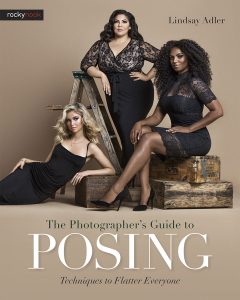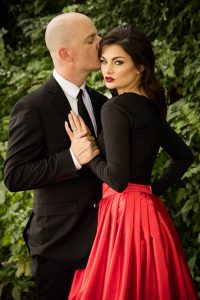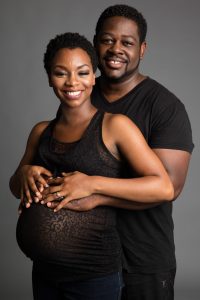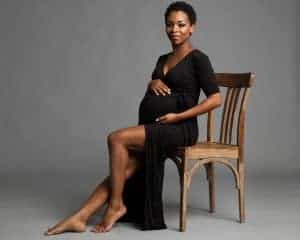
About the Author
Lindsay Adler is one of the top fashion photographers in the industry. Her work has appeared in numerous fashion magazines such as Marie Claire, InStyle, Rangefinder and others. She has a clean and bold style that has earned her a reputation as one of the top ten fashion photographers in the world. In addition to her work as a photographer, Lindsay also dedicates a significant portion of her time helping other photographers learn and improve. She often presents at industry conferences and has training classes available on creativeLIVE, KelbyOne and others.
Closer to home, Lindsay has worked with Improve Photography as a contributor to our popular Lens Finder Tool and has appeared on the Improve Photography Podcast (Episode #51). You can find out more about Lindsay and her work on her website https://www.lindsayadlerphotography.com. She has certainly proven herself as an expert in the fashion world and in posing individuals.
Book Overview
“The Photographers Guide to Posing: Techniques to flatter Everyone” is designed to help all photographers learn and improve their skills in posing individuals and groups. This is a quite comprehensive book, with 436 pages full of information and examples that will train you on all aspects of posing, including how lens choice and angle can affect the image, giving directions, positioning your subjects, and angles to create beautiful pictures. The goal of the book is to not only train you on the best ways to position the subject or subjects in your photos but to also show you how to do it in a way that makes the person feel comfortable and not artificially or awkwardly posed. According to the book some people consider posing a four letter word, they don’t want to look posed in their images, they want to look natural. So the book outlines tips and strategies to get the best from your subjects without making them feel they are being posed.
The goal of the book is to not only train you on the best ways to position the subject or subjects in your photos but to also show you how to do it in a way that makes the person feel comfortable and not artificially or awkwardly posed. According to the book, some people consider posing a four letter word, they don’t want to look posed in their images, they want to look natural. So the book outlines tips and strategies to get the best from your subjects without making them feel they are being posed.
The book is broken down into a number of Chapters, each one expanding on the earlier one but covering its own topic The book begins with an explanation on how the camera sees, how lens choice and cropping affect the outcome of an image and how you can use that to your advantage to create great images. She then takes you through the basics of posing and directing the face, neck, and shoulders. Throughout this section, she offers tips on how to properly and confidently direct the subject to get them into a position you want.
The next Chapter focuses on some of the more common posing pitfalls of posing; such as poor posture, foreshortening, mergers, awkward hands, and bad expressions. The book covers each of these in detail, including what each term means, how to identify when it is an issue and has plenty of pointers on fixing each issue. At the end of this chapter is the first “Train Your Eye” section of the book. These “Train Your Eye” sections are basically mini quizzes to test what you learned in the previous chapter. There are a few images posted where you are asked to identify any problems with the pose. Each photo has 3-4 things that can be improved. On the next page are the answers so you can see if you were able to correctly identify all the issues with the image.
Moving on from common posing pitfalls, the real meat of the book begins. The next chapter is on selecting your pose, adjusting the pose, engaging the subject and shooting; starting with one of 5 base poses, such as sitting, standing lying down etc. The book guides you though Lindsay’s 10-step process of guiding the subject through a series of positions and adjustments to create a variety of looks from each base pose.
Following the 10 Steps to Posing, each of the following chapters goes more specifically into detailed posing techniques for each type of subject: women, men, couples, curves, family portraits, boudoir, and maternity shoots. Throughout each of these chapters are Lindsay’s guidelines for photographing the specific subject, additional tips for the subject and more go to poses for each type that you can use and when to use them.
By the concluding chapter, you are given a very thorough guide on everything you should look for in posing a variety of subjects. The book concludes with a variety of test subjects and sample photo shoots where she takes you through her process once again pointing out issues that she encounters and her solutions for each issue including a final checklist of the things you should be looking for with each type of subject.
In addition to the primary content of the book, there are also three additional features located throughout the book: “Pro Tips,” “Caution” and “Mastering Your Craft.”
“Pro Tips” are short additional tips that you can use in addition to the posing strategies offered in the section that can improve your photos. For example, a tip on types of clothing to recommend, where to find accessories like apple boxes, or websites to visit for inspiration.
“Cautions” are small captions in the side bar that point out specific items that you may overlook but should pay particular attention to, or a reminder of something from a previous section that shouldn’t be forgotten in this section. They also occasionally remind you that these are only guidelines for posing and sometimes it’s ok to break the rules.
Finally throughout the book are many “Mastering Your Craft” sections. These are usually a page or two of extra tips that either doesn't really fit within any particular posing area but are good for a photographer to know, or they may be an advanced tip to look for. Some examples are how focal length affects facial features, how to deal with double chins, how to accentuate the jawline in men, or how camera angle can affect the final image.
What I liked about the book
I’ll be honest, I’m relatively inexperienced when it comes to photographing people, while I have done a number of individual and family portrait sessions and my clients are always quite happy with them I know have a lot of work to do to improve those photos. My skills in posing still need work. That’s why I purchased this book. I am familiar with Lindsay’s online classes and have watched a few of them and heard her speak on a few different podcasts or other interviews. As well, I enjoy her teaching style and the energy she has in her videos. So, I was quite excited when this book was announced and pre-ordered it and then waited patiently for it to arrive.
In all of her online courses, interviews, and presentations, Lindsay Adler has a friendly, energetic and passionate personality. Her mannerisms, tone, and vocabulary are always easy to listen to and entertaining to watch. This aspect of Lindsay’s personality is clearly entrenched throughout the book. The tone and flow of the text feel as if Lindsay is speaking directly to you and her personality shines through. She makes the book very easy and enjoyable to read. It doesn’t feel like you are reading an instructional book but being given a one-on-one in person lesson. Lindsay is also very clear in her directions, tips, and strategies. She guides you through her processes in a positive and clear manner with exceptional detail so that you don’t miss anything. The attention to detail, included throughout the book ensures you have a clear understanding of the posing process, not just asking you to memorize poses you can recreate yourself.
Any book that offers to make you a better photographer should have examples images on what to do and what not to do. “The Photographer Guide to Posing” certainly does that. There are over 600 individual photos throughout the book. Almost every single one has a caption explaining what works or doesn’t work with that particular image. For example, It might be something as simple as the placement or position of the hand, or the way they are standing. Then following each problem image is an image with the corrected pose that offers a solution to create a more flattering photo. You could go through just the images and the captions for each image in this book and still learn a great deal about posing. But I wouldn’t recommend going that route. There are so many great tips and strategies throughout the book that you don’t want to miss. But for a quick refresher prior to a session, skimming the images and captions would certainly be inspiring on their own.
Can a book teach posing?
While I was excited to get my hands on this book I did have a few concerns leading up to it arriving. How could a book teach me how to pose people? How to direct them? Or what to do when I am on a shoot?. Posing is such an individualized process, different people take direction differently, and there are so many different body types to work with. How can you learn how to give direction in a book? Or how can you determine the best poses for each type of individual or group? There are so many variables, wouldn’t it be better to watch a video of someone guiding a model through the process, see the interaction and what is involved?
I wasn't sure if a book could help me in those areas, but after reading “The Photographer's Guide to Posing: Techniques to Flatter Everyone” I certainly feel more confident in my abilities to direct a person or group of people through the process. The tips listed throughout the book are not just tips on where to place the hands, or how to stand. They also give specific details on the wording you can use to direct the subject. How to create a relationship with them to get their best expression and pose. So rather than telling them to “sit up straight”, or “smile”, there are directions and example dialogue you can use to get the person to do what you want but in a positive more natural way. I feel I now have a better idea of how I should interact with the subjects and I am sure my images will improve after reading this book.
Areas for improvement
Of course, any review wouldn’t be complete without some criticism or areas for improvement. This is a fantastic book, but I did have a few small issues while reading. Both issues I encountered have to do with the flow of the text or positioning of the sample images. A few times throughout the book the paragraph is describing an image that’s on the flip side of the page. So you have to keep turning back and forth to see the example. It might say something like “As you can see in Figure X, the hand placement covers the chin.” But to see to Figure X you have to turn the page. Having to flip the pages back and forth disrupts the flow and can distract from the lesson. But this only happened a couple of times throughout the book so it wasn’t too big of a concern.
My other issue has to do with the “Mastering Your Craft” sections. These sections are great and quite informative, but their placement throughout the book sometimes seems random, and are often placed in the middle of a section, disrupting the flow. There is also no description of what these sections are in the introduction of the book so one of the first times I encountered “Mastering your Craft” was a little confusing. It was placed in the middle of a section on giving directions. I’m reading details about how to use mirroring and gesturing to get the person into position. Suddenly I’m reading a page about the differences between tilting the head for men and women, and then it’s back to positioning using verbal directions. I thought for a second I missed something somewhere. The flow of the pages just didn’t work well. This happens a few times in the book, so I started skipping over the “Master Your Craft” sections and then reading them after I completed the chapter.
Recommendation
Overall this is a fantastic book and resource to add to your library. If you want to gain more confidence as a photographer on directing and positioning your subjects to ensure you capture flattering images then this is a must own book. It is quite easy to read, very thorough and detailed in providing clear directions on the process for posing your subjects. It's not just a book that shows a pose and says “For women sit them this way,” but it explains why you should pose them in such a way, and how you guide them through the pose so they look natural and comfortable.
In addition to training you on how to take better, more flattering photos it can remain a reference manual for inspiration, quick tips, and reminders that you can keep referring to throughout your career. I mentioned this is a book to own, not just read or borrow because this isn’t a book you will read once and put on your shelf never to look at again. This is a book to return to over and over as a reference and continuous recourse for information and inspiration. I highly recommend you check this book out. If you are interested in getting your own copy of the book in either digital or paperback you can purchase one on Amazon.com
Additional tools to improve your posing.
While “The Photographer Guide to Posing” is a wonderful resource, using a variety of tools will make you a more well rounded and better photographer. There have been a number of articles here on Improve Photography to help your posing:
10 FOOL-PROOF POSING TIPS FOR GROUP PORTRAITS
PHOTOGRAPHING WOMEN: 8 TIPS FOR POSING, LIGHTING, AND DETAILS
PHOTOGRAPHING COUPLES: 13 “GO-TO” TRICKS FOR AUTHENTIC POSES AND INTERACTIONS
THE SIMPLEST WAY TO POSE YOUR SUBJECTS
TOP 10: POSES TO WORK ON WITH A NEW FEMALE MODEL
The Portrait Session Podcast, now part of the Improve Photography Podcast, often gives tips and strategies for working with people and better posing. If you are a podcast listener I encourage you to check out this podcast.
Finally, Improve Photography Plus members get access to a one-hour training video with Erica Kay, host of the Portrait Session Podcast, on posing that you should check out. If you aren't already a member of IP Plus then you should consider joining that as well.
** Note all images used in this article were provided by Rocky Nook Publishing and are copyright Lindsay Adler.






Ive read one review of this book that said it was too focused on studio photography. Do you think that was a fair comment?
The majority of the examples were certainly studio based. But the processes and methods for posing people can be used in almost all situations.
The book is about posing, it doesn’t matter where you pose the people in the studio or on location, wih artificial or natural light. Is about shapes and angles. Another good book is from Roberto Valenzuela, Picture Perfect Posing where he also explains why some posing works while other don’t.